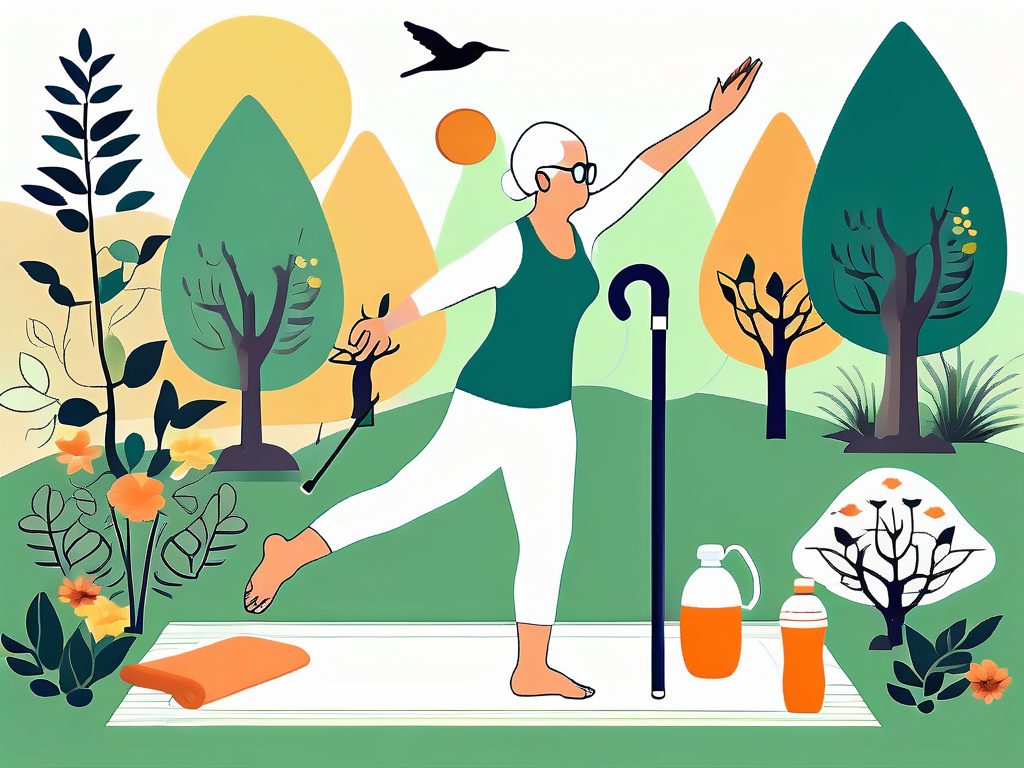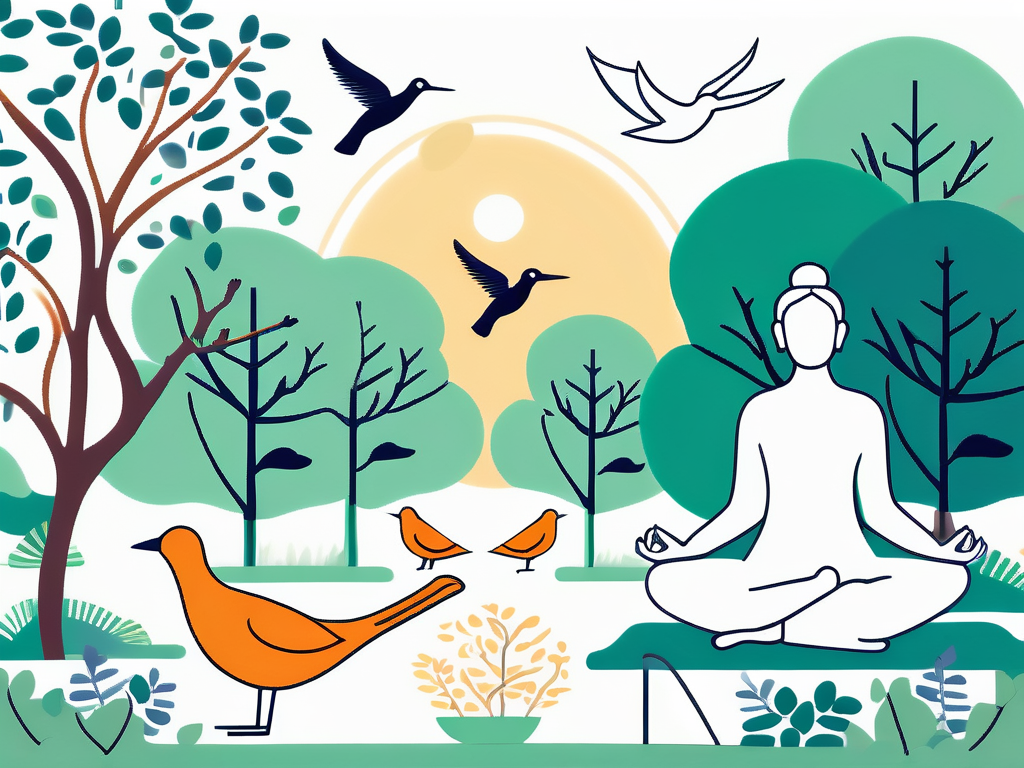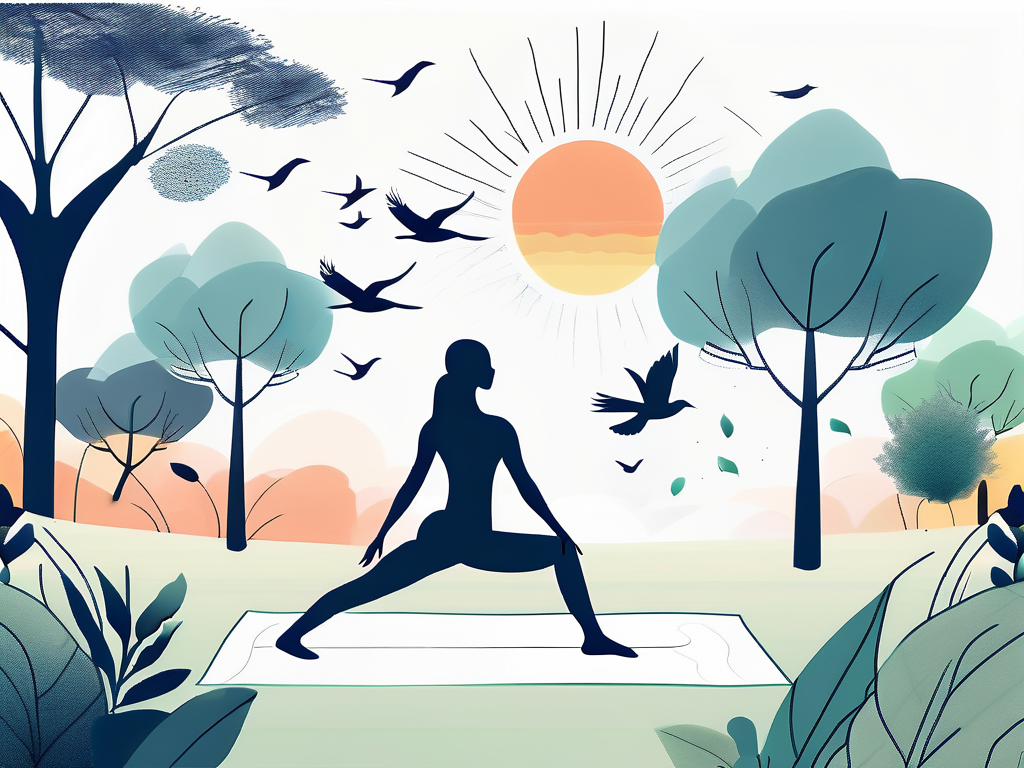In today's fast-paced world, staying active and maintaining good health is essential, especially as we age. One practice that has gained popularity among seniors is yoga. Beyond its physical benefits, yoga offers a holistic approach to well-being, enhancing mobility, balance, and graceful aging. In this article, we will explore the importance of yoga for seniors and delve into some essential practices and safety measures to consider.
Understanding the Importance of Yoga for Seniors
The Role of Yoga in Aging Gracefully
As we age, our bodies undergo various changes, such as reduced flexibility, muscle loss, and decreased balance. Yoga is an ancient practice that can help seniors counter these effects and maintain their overall well-being. By incorporating yoga into their lifestyle, seniors can improve their physical strength, flexibility, and mental well-being.
Furthermore, yoga offers seniors a holistic approach to health by not only focusing on the physical aspects but also on mental and emotional well-being. The practice of mindfulness and meditation in yoga can help seniors reduce stress, improve concentration, and enhance their overall quality of life.
Benefits of Yoga for Mobility and Balance
One of the significant benefits of yoga for seniors is its ability to enhance mobility and balance. Through gentle movements, controlled breathing, and stretching exercises, yoga helps improve flexibility, range of motion, and stability. This can be especially helpful in reducing the risk of falls and injuries, which are common concerns for seniors.
Moreover, the mind-body connection promoted in yoga can help seniors become more aware of their bodies and movements, leading to better coordination and proprioception. This increased body awareness can translate into improved balance and reduced risk of accidents in daily activities.
Choosing the Right Yoga Style for Seniors
Overview of Different Yoga Styles
When it comes to choosing a yoga style, it is crucial to consider the specific needs and abilities of seniors. Gentle styles such as Hatha, Restorative, and Chair yoga are highly recommended for seniors due to their low-impact nature and focus on relaxation and gentle stretching.

Seniors often find great benefit in practicing Hatha yoga, which focuses on basic postures, breathing exercises, and meditation. This style helps improve flexibility, balance, and strength, making it an ideal choice for older adults looking to maintain or enhance their physical well-being. Restorative yoga, on the other hand, involves holding poses for extended periods with the support of props like blankets and bolsters. This gentle practice promotes deep relaxation and stress relief, making it particularly suitable for seniors seeking a soothing and rejuvenating experience. Chair yoga is another excellent option for seniors with mobility issues or balance concerns, as it allows practitioners to perform modified yoga poses while seated on a chair.
Tailoring Yoga Practices to Individual Needs
Every senior has unique physical capabilities and limitations. It is essential to tailor yoga practices to their individual needs. Seeking guidance from a qualified yoga instructor with experience in teaching seniors can help create a personalized practice that takes into account any existing health conditions or concerns.
A skilled instructor will work closely with seniors to modify poses, adjust alignment, and provide necessary support to ensure a safe and effective practice. They will also emphasize the importance of proper breathing techniques and encourage mindfulness throughout the session. By customizing yoga practices to suit the specific needs of seniors, instructors can help them experience the full benefits of yoga, such as improved flexibility, reduced stress, and enhanced overall well-being.
Essential Yoga Poses for Seniors
Gentle Yoga Poses for Improved Mobility
Yoga is a wonderful practice for seniors looking to improve their mobility and overall well-being. Here are some simple, yet effective, yoga poses specifically tailored for seniors:

- Mountain Pose (Tadasana): This foundational standing pose not only helps improve posture and balance but also promotes a sense of grounding and stability.
- Seated Forward Bend (Paschimottanasana): Perfect for gently stretching the hamstrings and lower back, this seated pose can help alleviate tension and improve flexibility in the spine.
- Tree Pose (Vrksasana): Focusing on balance and alignment, this pose is excellent for strengthening the legs and enhancing concentration, which can be beneficial for overall stability.
- Cat-Cow Pose (Marjaryasana-Bitilasana): This gentle flow between arching and rounding the back is ideal for promoting spinal flexibility and mobility, making it easier to perform daily activities with ease.
Adding these poses to your daily routine can help seniors maintain and even improve their mobility, making it easier to stay active and independent as they age.
Yoga Poses for Enhancing Balance
Balance is crucial for seniors to prevent falls and maintain confidence in their movements. Here are some yoga poses that specifically target balance improvement:
- Tree Pose (Vrksasana): As a staple balancing pose, Tree Pose not only strengthens the legs and core but also enhances focus and stability, which are essential for navigating daily tasks with ease.
- Warrior II Pose (Virabhadrasana II): This dynamic standing pose not only improves stability and stamina but also helps seniors build strength in their lower body, promoting better posture and alignment.
- Eagle Pose (Garudasana): Known for its challenging nature, Eagle Pose requires focus and concentration, making it a great pose for enhancing balance and coordination in seniors.
- Warrior III Pose (Virabhadrasana III): By engaging the core and leg muscles, Warrior III Pose helps seniors improve their balance, posture, and overall body awareness, which can translate into better stability in everyday movements.
Safety Measures for Seniors Practicing Yoga
Precautions to Take Before Starting Yoga
Before starting a yoga practice, seniors should consult with their healthcare provider, especially if they have any existing health conditions. It is essential to inform the instructor about any specific concerns or limitations to ensure a safe and beneficial practice.
Furthermore, it is recommended for seniors to start their yoga practice slowly and gradually increase the intensity and duration of their sessions. This approach allows the body to adapt to the movements and reduces the risk of injury. Additionally, staying hydrated before, during, and after the practice is crucial for overall well-being.
How to Modify Yoga Poses for Safety
Yoga poses can be modified to accommodate seniors with different abilities or limitations. Using props such as blocks, chairs, or straps can provide support and make the poses more accessible. It is crucial to listen to your body, avoid overexertion, and take breaks whenever necessary.
Moreover, focusing on proper alignment during each pose is key to preventing strain or injury. Seniors should pay attention to their breathing and ensure a steady and controlled breath throughout the practice. This mindfulness not only enhances the yoga experience but also promotes relaxation and reduces stress levels.
Incorporating Yoga into Daily Routine
Creating a Consistent Yoga Schedule
In order to fully benefit from a yoga practice, it is essential to create a consistent schedule. Start with shorter sessions and gradually increase the duration as your body adapts. Aim for at least two to three sessions per week to experience the positive effects of yoga.

When establishing a consistent yoga schedule, consider incorporating different styles of yoga to keep your practice engaging and challenging. Vinyasa flow for dynamic movement, Hatha for a more gentle approach, or Yin for deep stretching and relaxation are just a few options to explore. By diversifying your practice, you can target different areas of the body and prevent monotony.
Making Yoga a Part of Lifestyle for Graceful Aging
Yoga is not just a physical exercise; it is a way of life. Incorporating the principles of yoga, such as mindfulness, breathing techniques, and self-care, into daily activities can enhance overall well-being. Practicing gratitude, eating a balanced diet, and cultivating healthy relationships are all part of living a yogic lifestyle.
Furthermore, integrating meditation into your yoga routine can deepen your practice and promote emotional resilience. Taking a few minutes each day to sit in stillness, focus on your breath, and quiet the mind can have profound effects on reducing stress and increasing mental clarity. This holistic approach to yoga extends beyond the physical postures, nurturing a sense of inner peace and balance.
In conclusion, yoga for seniors offers numerous benefits for mobility, balance, and graceful aging. By understanding the importance of yoga, choosing the right style, practicing essential poses, and taking necessary safety measures, seniors can embark on a transformative journey of self-care and well-being. With regular practice and a mindful approach, yoga can become an integral part of a senior's daily routine, positively impacting their physical, mental, and emotional health.




